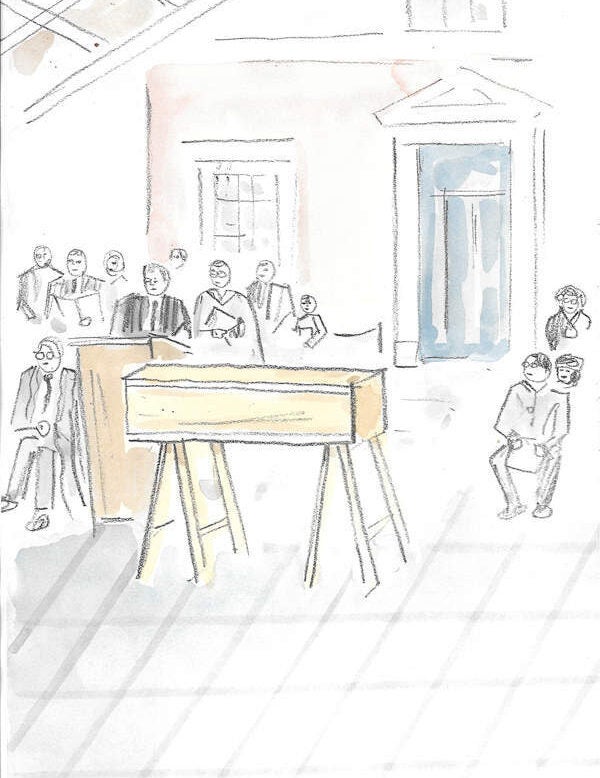

I was delighted that Spear’s had a ringside seat inside Leicester Cathedral for the Sunday afternoon service for Richard III in March. It was a bizarre but sublime day.
After Spear’s cover artist Adam Dant and I had attended the morning service to mark ‘the departure of the mortal remains’ of Richard III at the Leicester University campus, we found ourselves on the M69 travelling at speed behind the hearse — en route to the Bosworth battlefield. While walking solemnly behind the oak casket of Richard III had seemed strange but not surreal, driving along at 70mph behind a coffin containing the bones of the last English king to die in battle was truly peculiar. Then it was on to the cathedral.
It was all a reminder — to me at least — of how our greatest national asset is our unique history. Adam — who has just been appointed by the government as the nation’s official general election artist — admitted the day was unusual: ‘It’s not every day that you get invited to bring your sketchbook to the reburial of the last Plantagenet king.’

See all Adam Dant’s sketches from Richard III’s reburial here
For the reburial itself, I was allocated a less historic perch, inside the White Rose cathedral tearoom. I liked the unscripted moment after the service when I witnessed an assistant to the Archbishop of Canterbury using a dustpan and brush to sweep up some soil that was lying on the new stone floor around the coffin. Only this was not any old English soil. As Richard’s coffin was lowered into the grave in his new royal chapel, the archbishop had sprinkled soil from Fotheringhay Castle (where Richard was born), Middleham Castle (where he met his wife) and the battlefield of Bosworth itself. As he did so, the archbishop said: ‘From the earth you formed me, with flesh you clothed me.’

The Richard III tomb will become one of Britain’s greatest tourist attractions, finally putting the home town of Thomas Cook back on the map after being very much in decline for the last quarter of a century. By embracing its 1,000-year heritage, Leicester will now be able to reinvent itself both economically and culturally. Likewise, it should be noted that a special debt is owed to old-fashioned academia. The bones of Richard III were only discovered because Leicester has such a strong archaeological team.
It’s not often that academics are the stars of a global circus, but seeing them filing out of the cathedral beside the royal dignitaries reminded me that it was the spirit of empirical scholastic questioning, the voice that is brave enough to ask, ‘What if?’ when the odds are hopelessly stacked against you, that was the real victor ludorum of the Plantagenet funeral games that took place in Leicester.
See all Adam Dant’s sketches from Richard III’s reburial here






